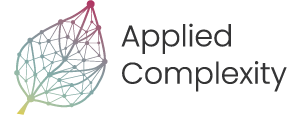
Future-proofing Healthcare Capacity

Challenge
The Dutch healthcare system is facing growing pressure from an aging population, rising demand for care, and increasing workforce shortages. Capaciteitsorgaan plays a key role in forecasting the future inflow of healthcare professionals per profession. While the current model is built on many years of expertise and data, it relies primarily on historical trends and static assumptions per individual profession.
This approach risks becoming misaligned in a rapidly evolving and interconnected care landscape. Workforce shortages in one domain directly affect others, and new hybrid roles, cross-border flows of patients and professionals, and changing funding models challenge traditional capacity planning logic.
Our Main Question: How can the current forecasting model be adapted to better reflect the dynamic, interconnected and uncertain nature of today’s healthcare reality — without undermining the value and structure it has built over decades?
Implementation
To explore this question, Capaciteitsorgaan established a multidisciplinary think tank in collaboration with Applied Complexity. Under the leadership of Prof. Peter Sloot, the group brought together strategists, system thinkers, policymakers, and experienced professionals from across the healthcare ecosystem. Over a series of sessions, the think tank developed a sharper framing of the challenge and surfaced concrete methodological directions for future capacity modelling.
This work is laying the foundation for a second phase: a series of Group Model Building sessions in 2026. The goal is to evolve capacity planning into a tool that is not only predictive, but also policy-relevant — capable of supporting robust decisions in an uncertain future.

